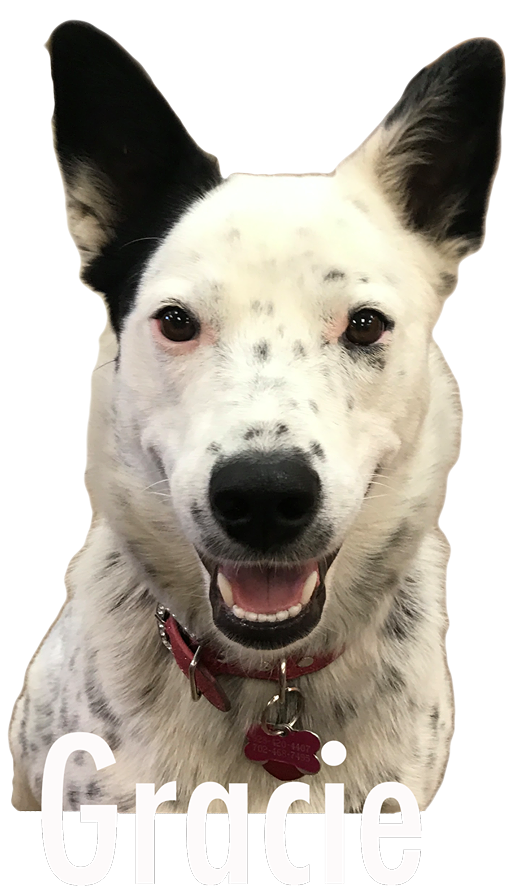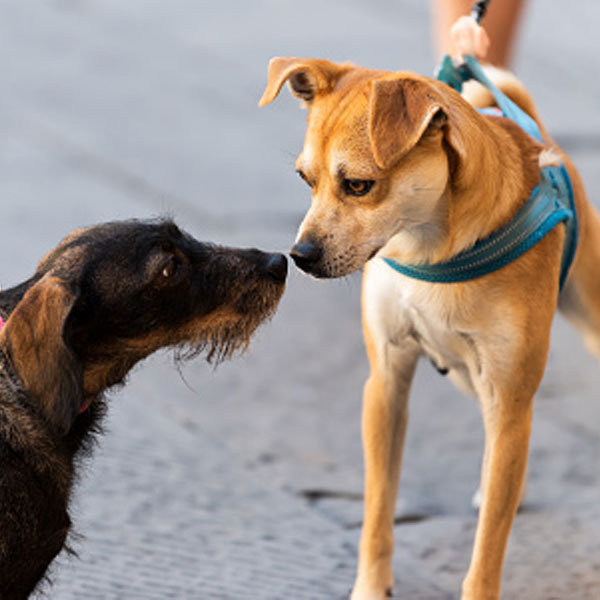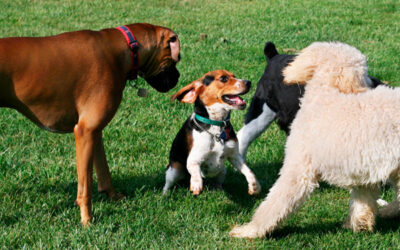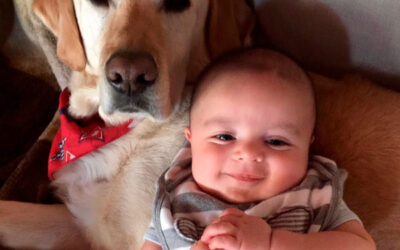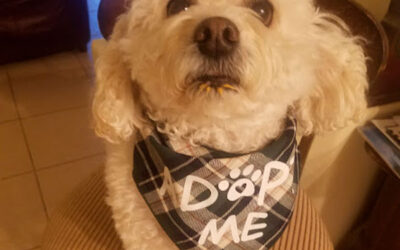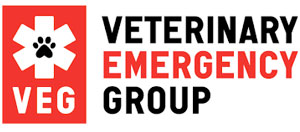How to integrate species into one home? Introducing new pets to the family can be a stressful time for every species involved, including the human. When rescuing a new family member or integrating households, meeting that new pet on equal ground can be a game changing way to help make these situations go smoothly. To help alleviate this stress and set them up for success, we will talk about different ways to do so and the various combinations of species we are trying to integrate.
Two dogs being introduced
Many factors can play a role in this situation, one important thing is to accommodate their needs. Meeting on equal ground can make the biggest change. They’re less territorial of their space and distracted by what’s going on around them. Sometimes distraction can help us! Once they’re around each other and are not reacting to one another, we like to have them walk parallel in the same direction with distance between them, closing the gap as the walk goes on. You can go up and back on a field at a park or go on a walk. Once they’re comfortable being there, we will have them walk in front of the other so they can get used to being a little closer and get more info about the other dog this way by smelling the dog in front of them, switching roles and getting closer as time goes on. Never force them to be closer or try to push it. Some dogs show avoidance, which isn’t a bad thing either. Move the exercise to the new territory or neighborhood and onto the property. Depending on their level of attention towards one another and reactivity, I like to move this type of training first into the yard and finally into the home. Time and patience are necessary, so they might need to practice a few times. Using kennels or a crate can also make things work easier, as they both have their own space or den.
Dog and cat
With two different species, we may need to make adjustments. Most cats do not walk on a leash so this process needs to be done to accommodate, also territory can be difficult on either side of the coin here so we will look at ways to make this better for both the cat and dog. It is imperative that both species have their own safe space as you start this transition. Having them get comfortable in the space while the other is close but not there to stress further. After a day or two in that space, if they’re doing well with the other in the space, we will push their positive interactions. Helping them understand each other by scent is an amazing way to start. Kari suggests that we put a blanket or towel in each of the animals’ spaces to gather their scent, then switch them to the other after a day or so, so they can smell each other. Next, a door between them can be a very positive thing because they can interact between it without seeing each other. With a person on each side of the door, we will do things like train and play and make it very positive as well as feedings. But remember that each situation can be adjusted if either side is reactive. When they are on each side of the door without being too focused on one another, a baby gate between can be great, you’re slowly making them comfortable with each other. A towel covering at first could allow for easier scent transfer but less eye contact if needed. Kari also says to try to be as positive as possible when doing this. Correcting either side with shouting for example could lead to one side being
scared around the other and alter the situation. When they’re doing well, we like to situate the gate so the cat can walk under the gate and be able to join as they choose. Watch carefully and allow for more interaction. The dog is allowed to be on a leash if this would help, however, some dogs can be more reactive on the leash so be aware of the dynamic. Remember the needs of both animals, having high places for the feline can help them immensely, and crate training can be great for the dog so you can control the spaces as needed. Always consult an expert if you have questions or concerns.
Dog/cat and pocket pets (rabbit, bird, etc)
Different species have very different needs and this category is probably the hardest because you can’t always train each pet as easily as another. Similar approaches as above would be ideal but usually, pocket pets are in their own enclosures as you’re doing the integration exercises. Start with scent first! Then the exercises to bring them closer. Dogs can be trained a little easier around these animals, but if you notice a prey drive from one of the animals please take these interactions slower. Correction tools like loud noises or yelling can be detrimental because the pocket pet could be much more harshly affected which can make the reaction from the other species more intense. Just like with small children, please supervise the interactions and guide the animals as needed without forcing the situation.
Calming collars and calming aids can be very helpful in all of the training above. Sentry brand calming collars or Adaptil calming collars/diffusers can be helpful to manage stress. These can be used for both cats and dogs!
For more information, contact Jeremy Brown with The Complete Canine
at 520-403-1401
